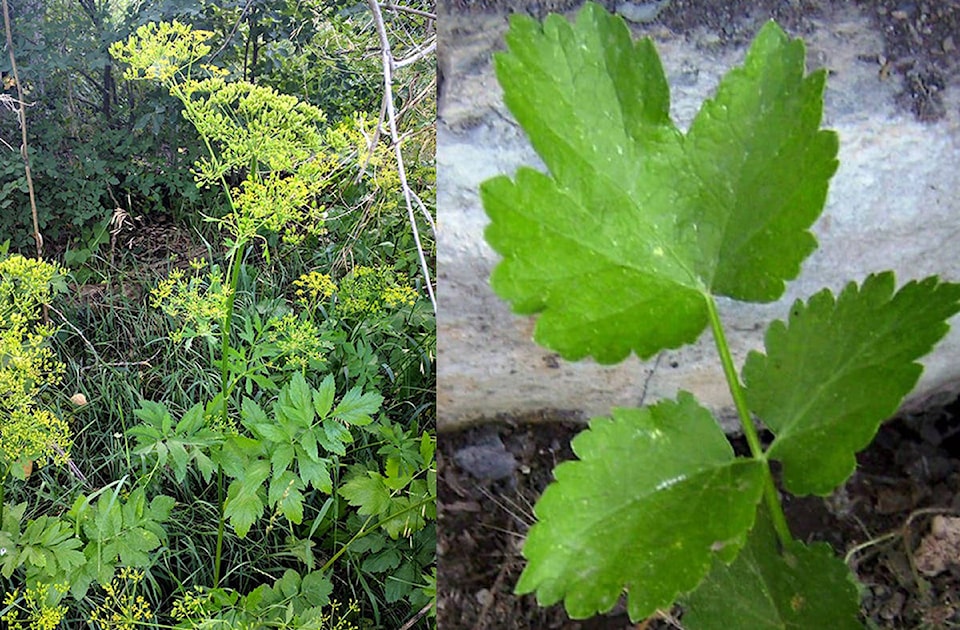Wild Parsnip is an invasive weed, new to the East Kootenay. It is a plant that most of us don’t want to have a Close Encounter of any Kind with.
Wild Parsnip is a biennial that can grow as tall as an adult human in its second, flowering year.
All of its above ground parts — little yellow flowers that grow in an umbel (flat-topped candelabra shape) on a grooved stem that extends up from the plant’s tooth-edged mitten-shaped leaves — contain a poisonous sap that can make contacted skin allergic to sunlight, causing a nasty blistered rash on you or the face of your curious dog, the next time you go outside on a sunny day.
If either you or your puppy touch Wild Parsnip or brushes by this plant with bare skin, immediately cover the affected body part to keep sunlight away until you can thoroughly wash any poisonous sap off with soap and water.
A Saskatchewan CBC News website article tells us that Wild Parsnip can be confused with Common Tansy or Golden Alexander that also have small yellow flowers on stem-top umbels. However, the leaves on those plants have shapes that are different than the chubby mitten leaves on Wild Parsnip that can divide into several leaflets.
Golden Alexander has narrow spearhead-shaped, tooth-edged leaves, and Tansy has fern-like leaves.
An Ontario website, invadingspecies.com, says Wild Parsnip was probably brought to North America by European Settlers to eat its carrot-like root, then it escaped from their gardens, as did so many other transplants brought here from other continents. It can form dense stands crowding out native plants and farmer’s crops.
There is something to be said for having to grow all your vegetables and herbs in an insulated and heated greenhouse — very few successful escapees.
Wild Parsnip can now be found in all US States, and every Canadian Province and Territory except Nunavut.
So far, the only reported location of Wild Parsnip in the Regional District of East Kootenay is in the Bummer’s Flats area between Fort Steele and Wasa, but the seeds of this invader like to hitchhike on people, animals and vehicles, along transportation routes.
Which means we need everybody to watch out for Wild Parsnip on their road travels and hikes, and report any suspected plants to the RDEK or East Kootenay Invasive Species Council with accompanying photos and map locations, if possible.
I recommend you go to ekisc.com and download the Report a Weed App on your phone, found in the Get Involved Section of the EKISC website. If you choose to tackle eliminating a Wild Parsnip patch yourself, be sure to wear protective clothing and rubber gloves, and garbage bag the plant for the Transfer Station. Never compost invasive plants.
Then, carefully remove and tub-wash your protective clothing in soap and water, so none of Wild Parsnip’s poisonous Sap gets on your skin. Let’s be safe out there while we protect our environment.
